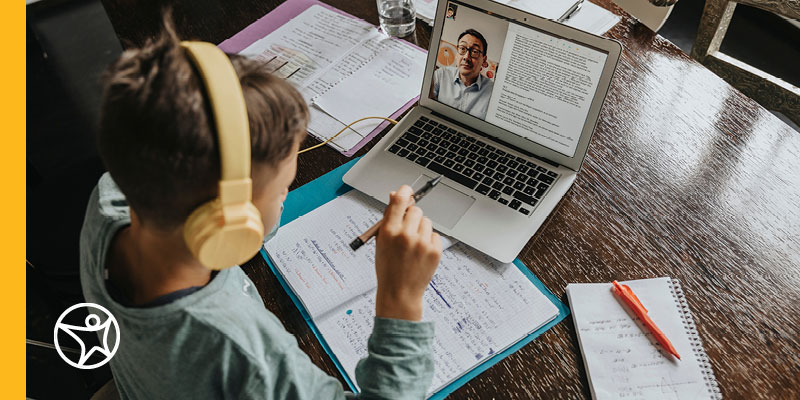Voting for Kids 101: Teaching Kids the Importance of Voting & Elections
by Christopher E. Nelson
byConnections Academy
5 min to readScreens are a part of everyday life. As a caregiver, you’ve likely spent years ensuring your children manage their screen time appropriately. After all, too much screen time can be detrimental to children’s mental and physical health. But with the rise of alternative learning options such as online school, many parents are asking: Is all screen time the same?
The short answer is no. Not all screen time is equal. In fact, online school screen time has a number of benefits if delivered properly.
Ever since the widespread adoption of the personal computer, screen time at school has been part of the learning experience for most children. In recent years, screens have become even more prevalent with many schools adding laptops, tablets, and even smartphones to the classroom. Then, there’s online school, which takes screens in school a step further, delivering the majority of the school experience over a computer.
Does increasing a child’s screen time for online school pose a problem given that children already spend lots of time on screens watching shows, playing games, and chatting with friends? It’s a question many parents have—and years of data on online learning provides an answer.
While many students only recently experienced online school, it is not a new concept. Connections Academy®, for example, has more than 20 years of online school experience. Thanks to this experience, education experts have a good understanding of how online school screen time affects—and benefits—students.
As previously mentioned, not all screen time is the same. For years, researchers have known that educational programming delivered on a screen can help children learn and even improve behavior, literacy, and cognitive skills.
The usefulness of educational programming begins in its design. If it’s centered on learning principles and asks children to interact with the program, it can help children gain new knowledge and develop new skills.
Online school operates on similar principles. Except, online school takes those principles to the next level. At a high-quality online school like Connections Academy, lessons are highly interactive and engage students throughout the learning experience. Similarly, LiveLesson® sessions allow students to interact with one another and their teacher in an environment that promotes curiosity, exploration, and discovery.

Online school isn’t a worksheet or a lecture delivered over a screen. It’s a learning experience specifically designed to be online. That allows K–12 online schools to take full advantage of the dynamic nature of digital environments.
Research has shown that complex digital interactions, like strategic video games, can help children improve their problem-solving skills. High-quality online schools tap into the same phenomenon through lessons that utilize the advantages of digital experiences. Where a traditional lesson may offer students only one course to follow, an online lesson can allow them to explore multiple paths, teaching them to look at new information from different angles and think about problems holistically.
Through its digital nature, online school is able to keep all types of learners more engaged and thus more focused on their coursework. This increases students’ ability to master new knowledge and then apply that knowledge to papers, group projects, and other assignments that require students to use and grow their problem-solving skills.
In other words, the online learning process challenges students in effective ways, giving them the space to think critically, build perseverance, and improve their ability to adapt—all thanks to online delivery and the use of screens.
Digital technology is now so ubiquitous that business experts consider digital literacy to be a foundational skill for anyone who wants to succeed in the years ahead. But digital literacy goes far beyond simply knowing how to use a digital device. True digital literacy is about being able to move smoothly through a digital world.
Screen time in schools ensures students develop digital literacy. From navigating the school’s online learning environment to conducting research online, to joining virtual clubs and meeting new friends across their screens, students in online schools immerse themselves in a modern, digital environment.
Best of all, students don’t just become comfortable with digital technologies; they learn to be productive in digital spaces. It’s a skill that will serve them well in their future. And it’s a skill that UNICEF says too few children are gaining. But, for online school students, digital literacy comes with the territory.

Even with all the advantages of online school screen time, it’s helpful to manage your child’s screen usage. As with most things, moderation matters. Fortunately, there are some easy-to-follow screen time recommendations for schools that provide online learning. These include:
Screens are ubiquitous in the modern world. It’s no longer if your child will use a screen, it’s when and for what.
For parents and students looking to get the most out of screen time, online school can be a fantastic choice. To learn more about online school and why it might be right for your family, check out our article “Online School vs. Traditional School.”
by Christopher E. Nelson
by Christopher E. Nelson
by Christopher E. Nelson
